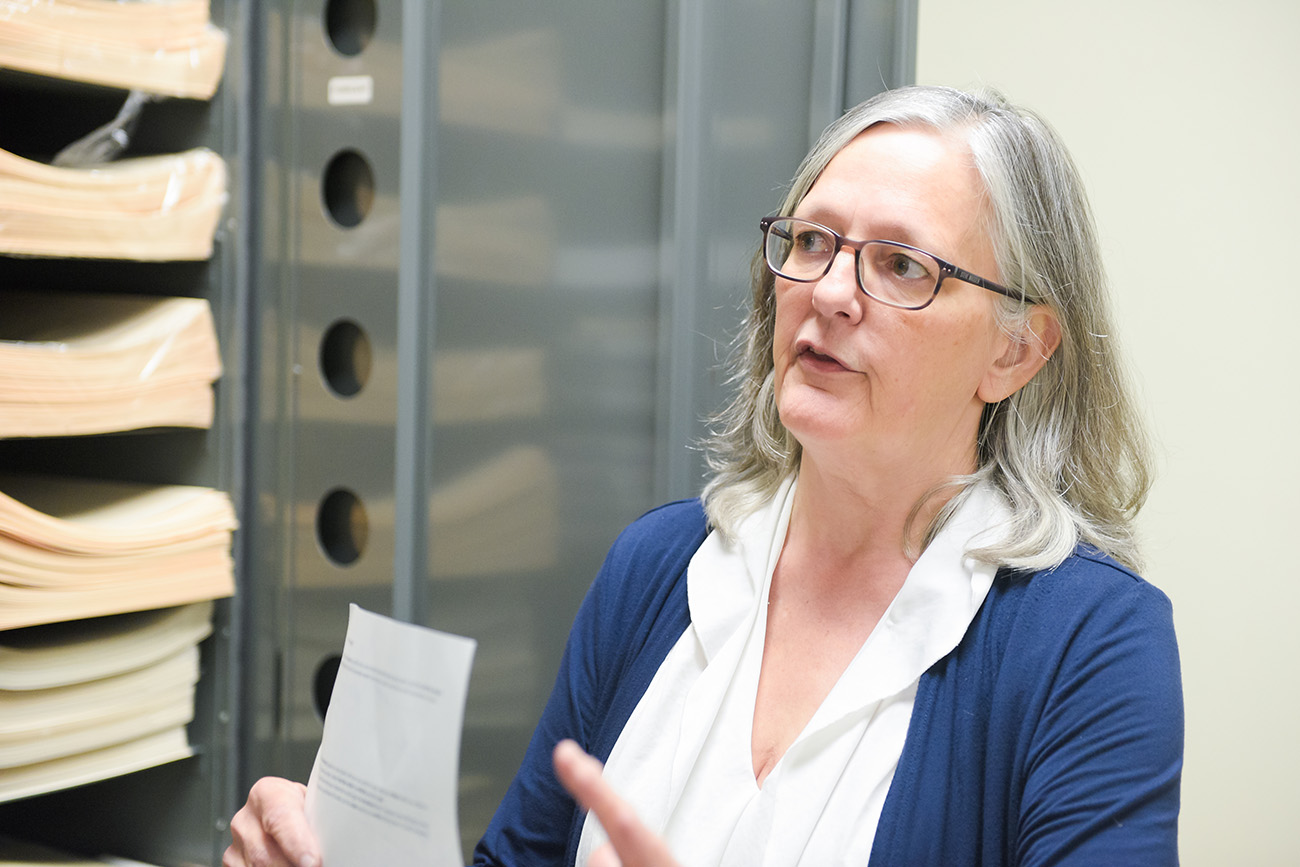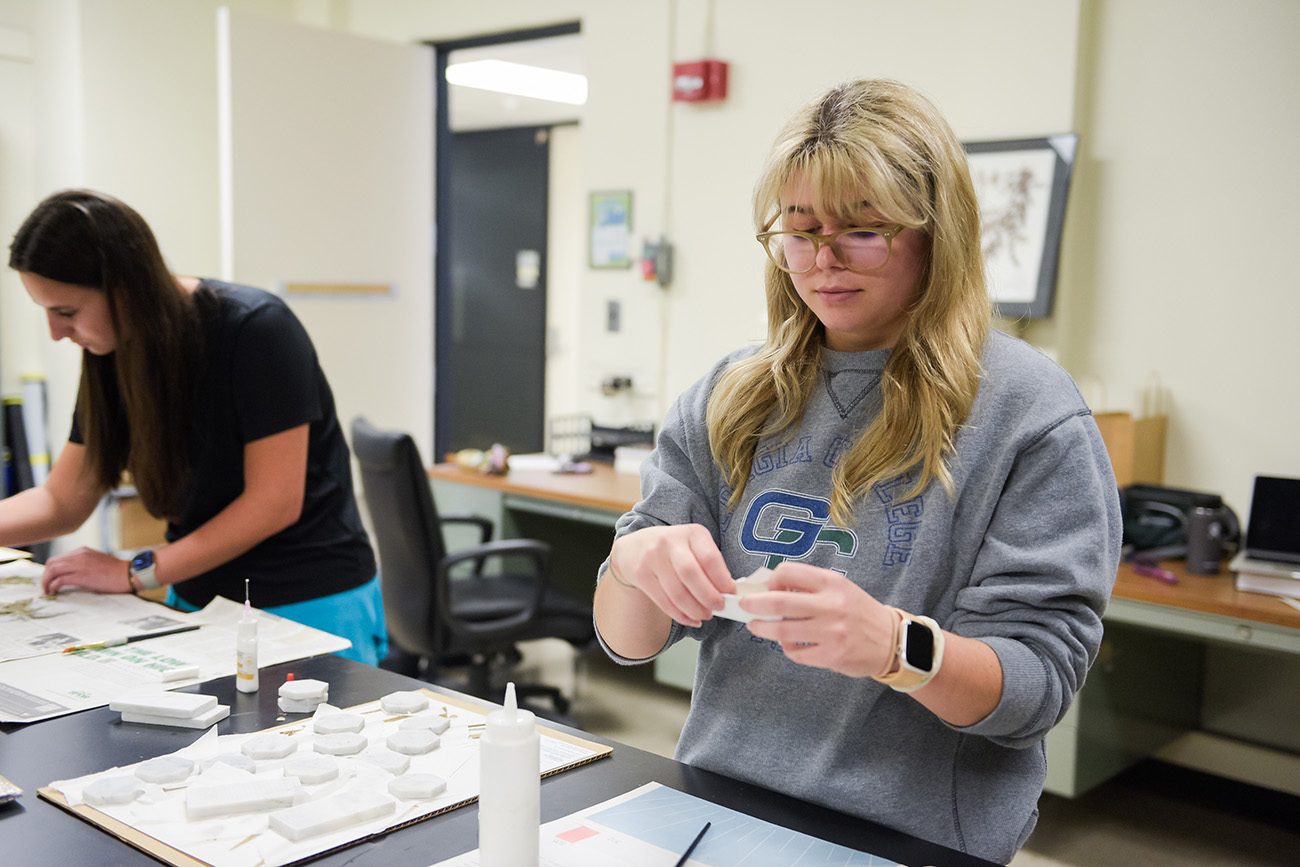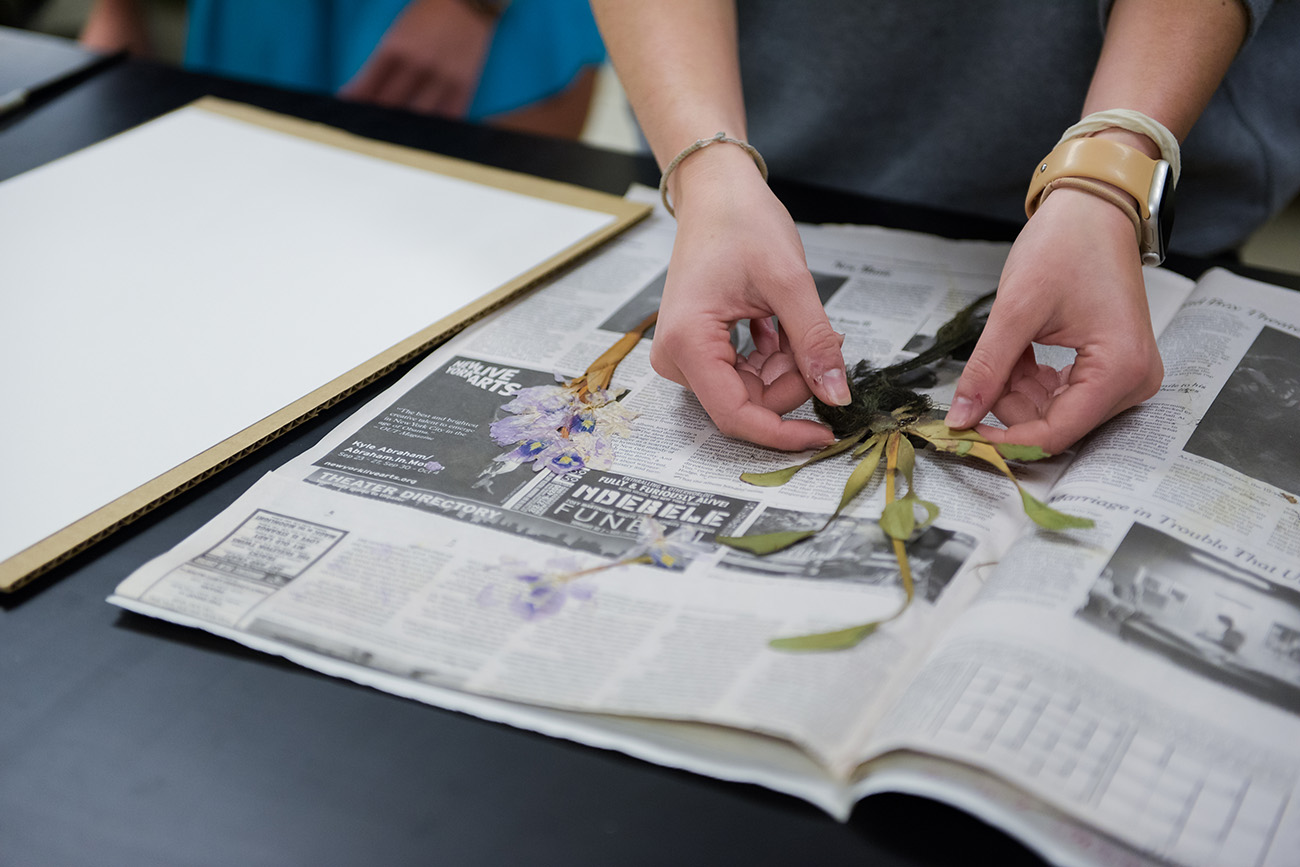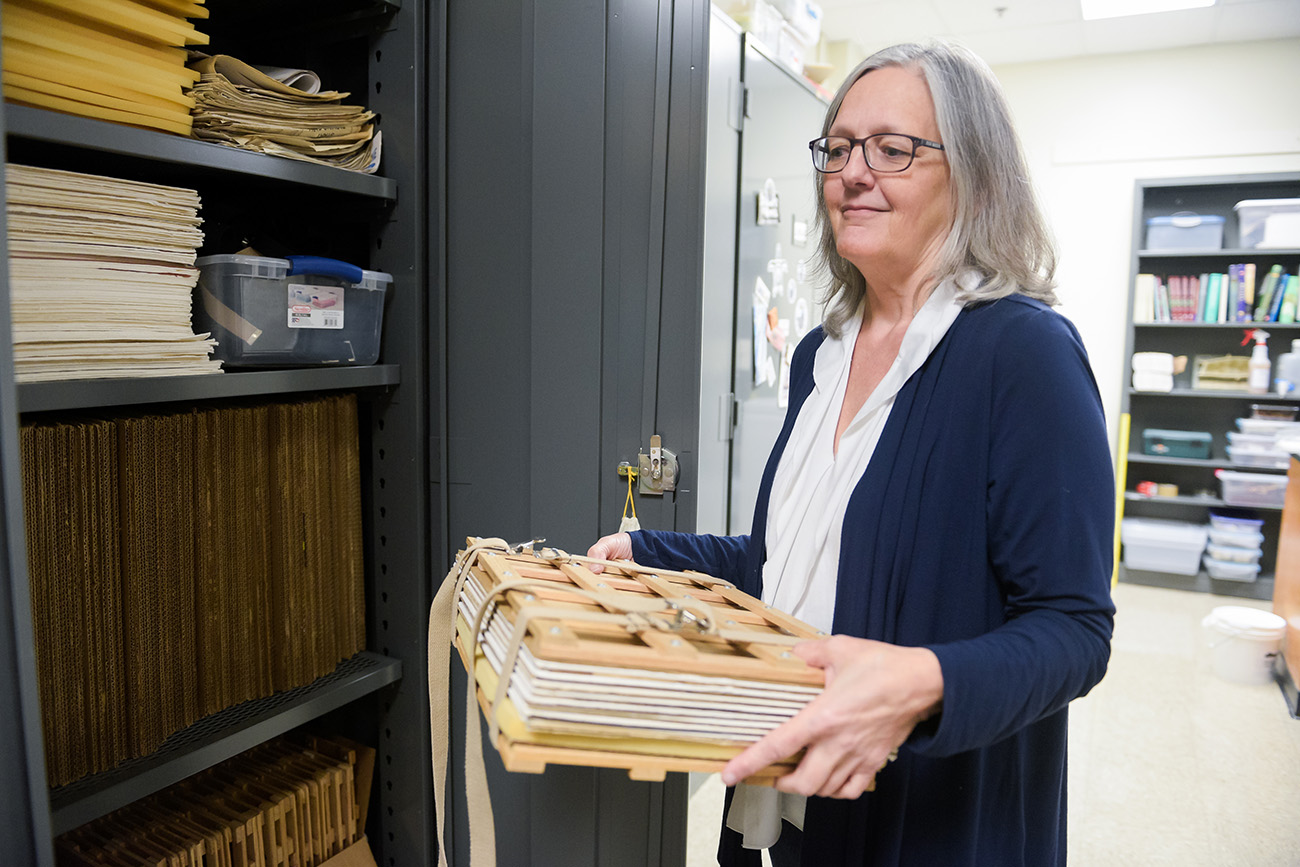GCSU’s herbarium fills the gap for Middle Georgia
Produced by University Communications
T
he variety of plants surrounding Athens, Georgia, are well documented and cataloged. This isn’t the case for Baldwin County and Middle Georgia.
But students and faculty in the herbarium at Georgia College & State University are working to change that.

“The majority of our samples are from Georgia, and mostly Baldwin County,” said Dr. Gretchen Ionta, associate professor of environmental science and current curator of Georgia College’s herbarium. “Around Athens there’s a ton of herbarium specimens, so you can go online and see where things were collected. But there’s a big hole in the center of the state.”
“A student could go through here and write a publication with all the different county records,” she said. “It’s not that the specimens are rare, it’s just that nobody looked.”
In an herbarium, plants are documented with their location like books in a library. This resource allows researchers and enthusiasts to monitor the environment and see if the same plants remain or change over time.
Local documentation of plants is important for understanding the ecology of an area and identifying what could be disappearing, Ionta said.
The herbarium was officially registered by Ionta in 2017, but students started collecting samples well before then.
For example, a Georgia College graduate student inventoried the plants of Andalusia collecting 260 specimens, almost a third of the herbarium’s specimens. It’s like a plant map of Andalusia.
Almost all the specimens in the Georgia College herbarium were collected by students. They document plant location, create botanical labels, press specimens and mount the specimens on acid-free paper for easy retrieval.

“We have about 1,000 samples, and there’s probably about 600 mounted,” Ionta said. “There have been 448 student collectors over the years, and we have 99 plant families, 249 genera and 358 species that those students have mounted.”
“You can see how beautiful their work is,” she said. “They’re doing a great job—incredible.”
Holly Lewis, a sophomore biology major at Georgia College, is one of those students. She mounts specimens for the herbarium every Thursday.
“I’m doing something with my hands, which I’ve always really enjoyed, but I’m also hanging out with my friends and getting to take a break,” Lewis said. “I didn’t think I’d be doing it, but I’m really glad I did, and it’s really important to be doing this.”
First-year biology major Sophia Williams is getting in on the action too.
“I came into ecology like ‘what is an herbarium?’” Williams said. “But I love it. I think it’s super fun and relaxing—it gives me a break.”
After Ionta retired at the end of May, Dr. Melanie DeVore, professor of environmental science, will take over as curator so the work can continue.
“It was a no-brainer for me,” Ionta said. “I love herbariums, so I’m going to make one. There were already plant presses and students collecting things, but it was never organized.”
“It was sort of in a closet,” she said, “so I decided why not—this is a really good thing for our students.”
The Fringed Campion Chapter of the Georgia Native Plant Society will be partnering with the Georgia College herbarium to develop native plant demonstration plots and projects at Andalusia. The documentation of the plant communities in Andalusia, provided by Gretchen and her students, is an essential tool in those projects.
This fall, DeVore will teach a plant taxonomy class where students will use and contribute to the herbarium’s current collection.
“Gretchen personifies the metaphor, ‘beneath still waters, there is a strong undertow.’” DeVore said. “She quietly built this resource with her considerable knowledge and expertise, and thoughtfully and carefully selected and trained students in herbarium techniques.”


Learn more about the Engage Pillar in our Imagine 2030 Strategic Plan
